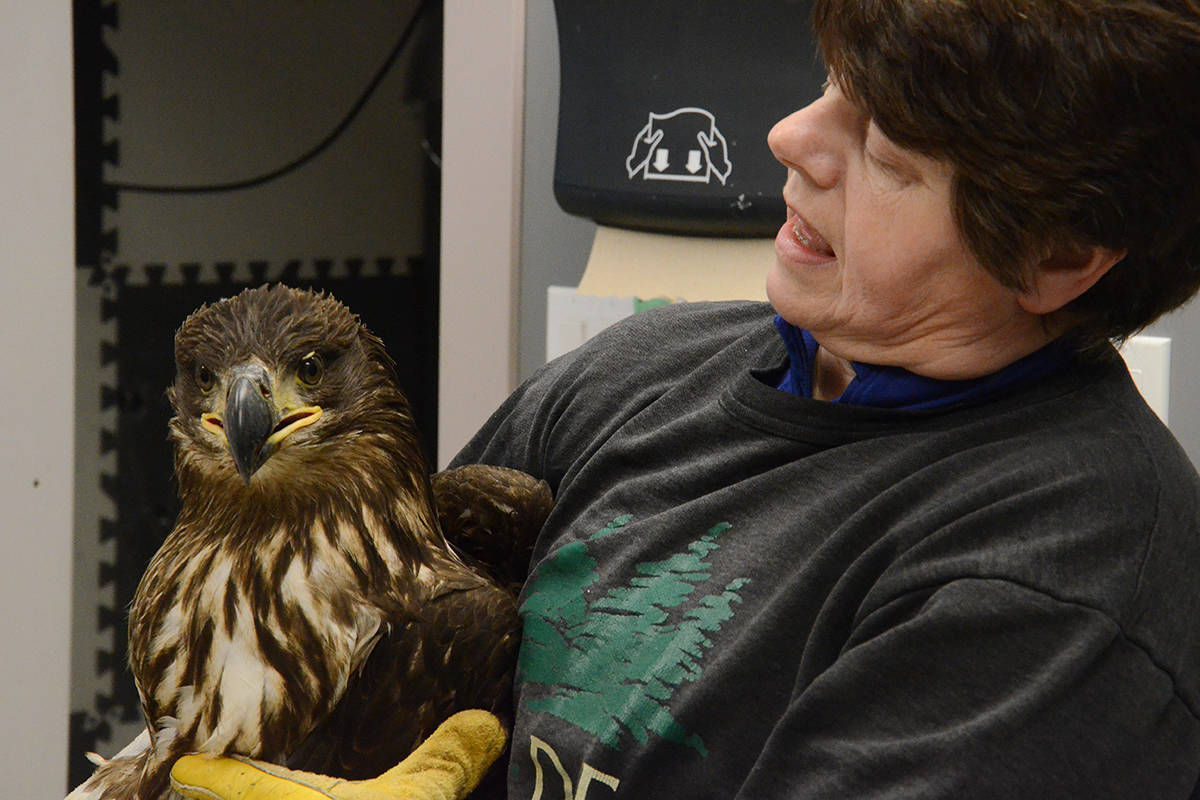The north part of Vancouver Island has also faced on influx of sick or injured eagles since the beginning of January.
The reasons, however, are likely different from the recent case in the Cowichan Valley in which a dozen eagles were brought in after being poisoned.
The factor there seems to be a single source – most likely from chemicals used for euthanizing animals without the animals subsequently being properly disposed. The birds may then eat the carcasses of the animal and be exposed to the toxic chemicals.
The situation for MARS Wildlife Rescue Centre in Merville, between Campbell River and Courtenay, is different. There are a number of different causes for the eagles that have come into the Williams Beach Road operation this month.
RELATED STORY: 12 poisoned eagles found in Cowichan Valley
MARS is a charitable organization that rescues and cares for sick, injured, orphaned or oiled wildlife. Senior caregiver Jo Stiles told the Mirror that of the 18 birds that have been brought into MARS since the beginning of the year, 11 have been eagles. These have come from around the region, such as Hornby Island, Gold River, the Port Hardy area and Campbell River.
“We have seen a number of eagles come in,” she said. “They have come from all over the Island, so we’re not dealing with the same situation they’re dealing with down south.”
Unlike the Cowichan situation, MARS points to a number of causes for the influx of eagles. They tested one eagle brought from Hornby Island that died over the weekend, which showed signs of lead.
“Lead poisoning in eagles happens when the eagles ingest the lead,” she said. “They usually ingest the lead because they ingest a duck or a goose.”
The exact origin is not known. Lead shot is no longer allowed for hunting water birds, Stiles said, but it can be used on uplands birds. As well, some hunters might be using shot illegally on water birds or leftover and rising to the surface in water areas after areas get flooded and later plowed up. The lead might then be eaten by ducks and geese.
“The dabbling ducks and the geese eat them from the ground,” she said.
Again, Stiles cautions they do not know if the lead is being used now, legally or illegally, or if it is old, recently exposed residual lead.
There are other reasons eagles have been brought in, Stiles said, such as sickness or injuries, especially from vehicle strikes. One bird was brought in from the Goose Spit area of Comox with an injured wing, possibly sustained during a wind storm. One eagle in Gold River died from a respiratory infection. Another injured on the Gold River Highway near Campbell River was brought in by a conservation officer after the driver reported the incident. A vehicle is also suspected in another case from Campbell River.
While the causes might be varied, one underlying factor in many cases, Stiles said, is starvation. Without strong salmon runs, the birds are looking to find food anywhere. That might include garbage, which again could be another source of the toxic substances to ingest.
Complicating matters is that eagles have high acidity in their stomachs, meaning what they ingest goes through the system quickly. In some causes, rescuers can induce regurgitation and treat the birds back to health by aggressively using charcoal.
While not unheard of, the number of eagles being brought in is uncommon, Stiles said, adding this is the time of year they get the most eagles, though they do not typically account for more than half the birds. One of the factors tends to be the lack of food, which weakens the birds and exposes them to more threats. For example, sometimes the birds are eating animals at the side of the road, which can then expose them to vehicles.
“Too many birds are trying to live off a landscape this isn’t supporting them,” she said.
READ MORE: MARS launches wildlife tote bag fundraiser



